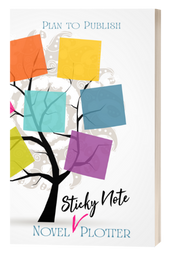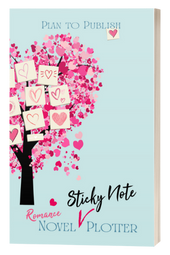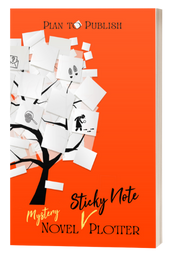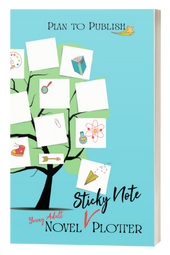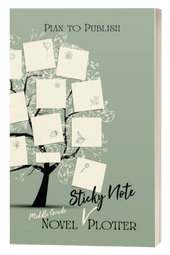
Outlining Workbooks for Your Story
Writing a book? Have a bunch of notes everywhere?
Finally, a tool to help you organize your thoughts and outline your novel! Take those scraps of paper, random lines in various spirals, and notes on your phone, and put them all in one organized, accessible place!
Transfer your ideas, bits of dialogue, and plot points onto sticky notes that can be arranged and rearranged however it best fits your outline. This unique workbook allows your outline to adapt and grow as your project does.
This 6x9 size fits easily into your bag so you always have your outline with you wherever you go. Useful for plotters and pantsers alike, this workbook can help a plotter write faster or a pantser write the summary at the end. See at a glance where you need to flesh out your plot, change directions, or double-check that you are right on track.
Includes pages for:
- character bios
- setting
- uncategorized notes
- individual chapters
Check out all the writer tools in the Plan to Publish line. Created by author Maria Hoagland utilizing the method she's used to write over twenty successful novels.
Finally, a tool to help you organize your thoughts and outline your novel! Take those scraps of paper, random lines in various spirals, and notes on your phone, and put them all in one organized, accessible place!
Genre-specific Plotters
Pages in the Novel Sticky Note Plotters
Here are a few examples of the pages in all of the plotters. In addition to the following pages, there are pages for setting notes as well as pages to park unassigned sticky notes while you figure out where they need to go.

Get to know your main and side characters. Each plotter has multiple 2-page spreads for collecting information about your main characters. Similar spreads are included for a number of side characters as well.
The mystery plotter has pages for the sleuth, law enforcement officer, victim, perpetrator, and several suspects as well as side characters.
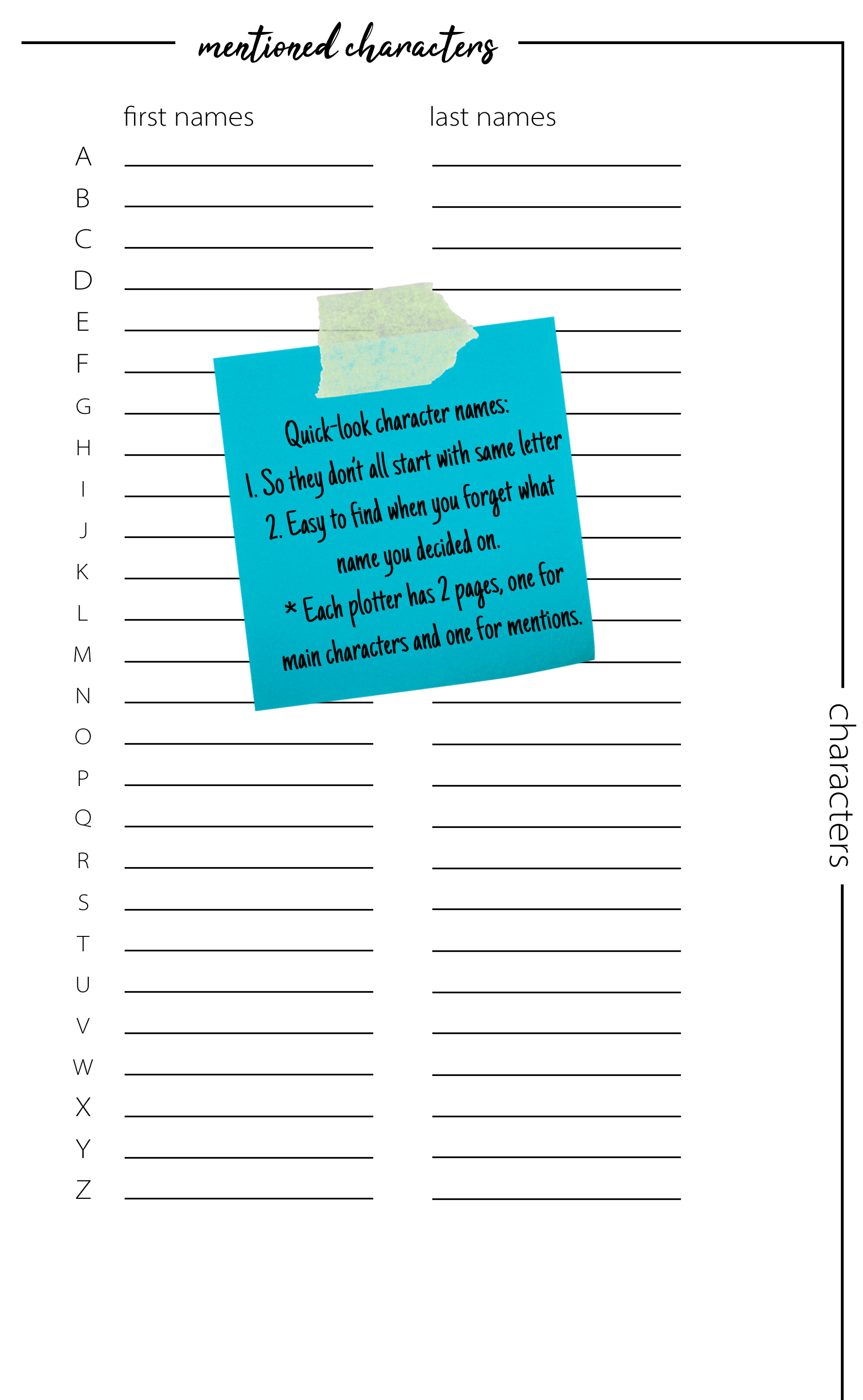
Never forget a character's name. See them all at a glance. Each plotter contains an A-Z table for main characters and another for mentioned characters.
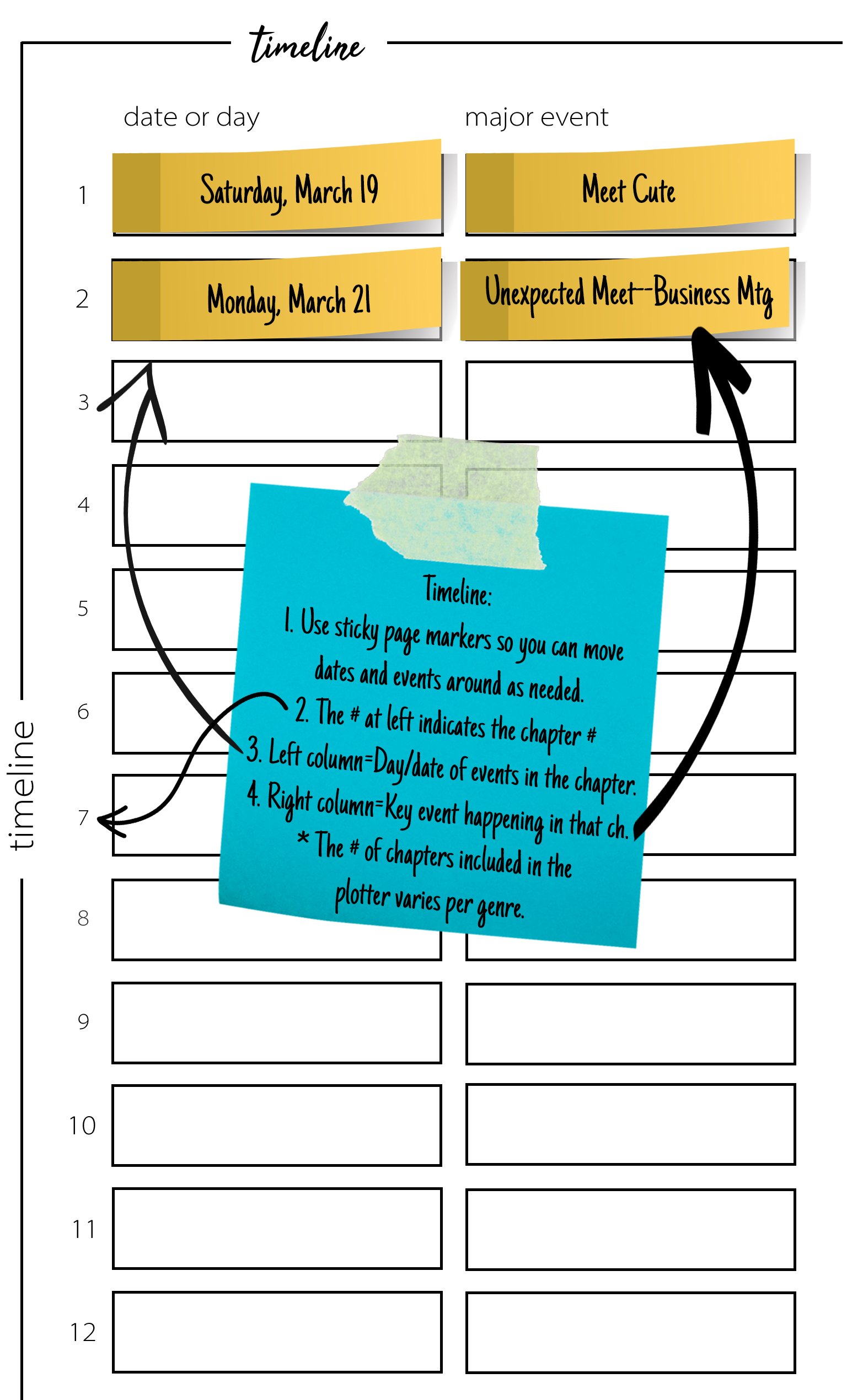
Your book's timeline and major events at a glance.
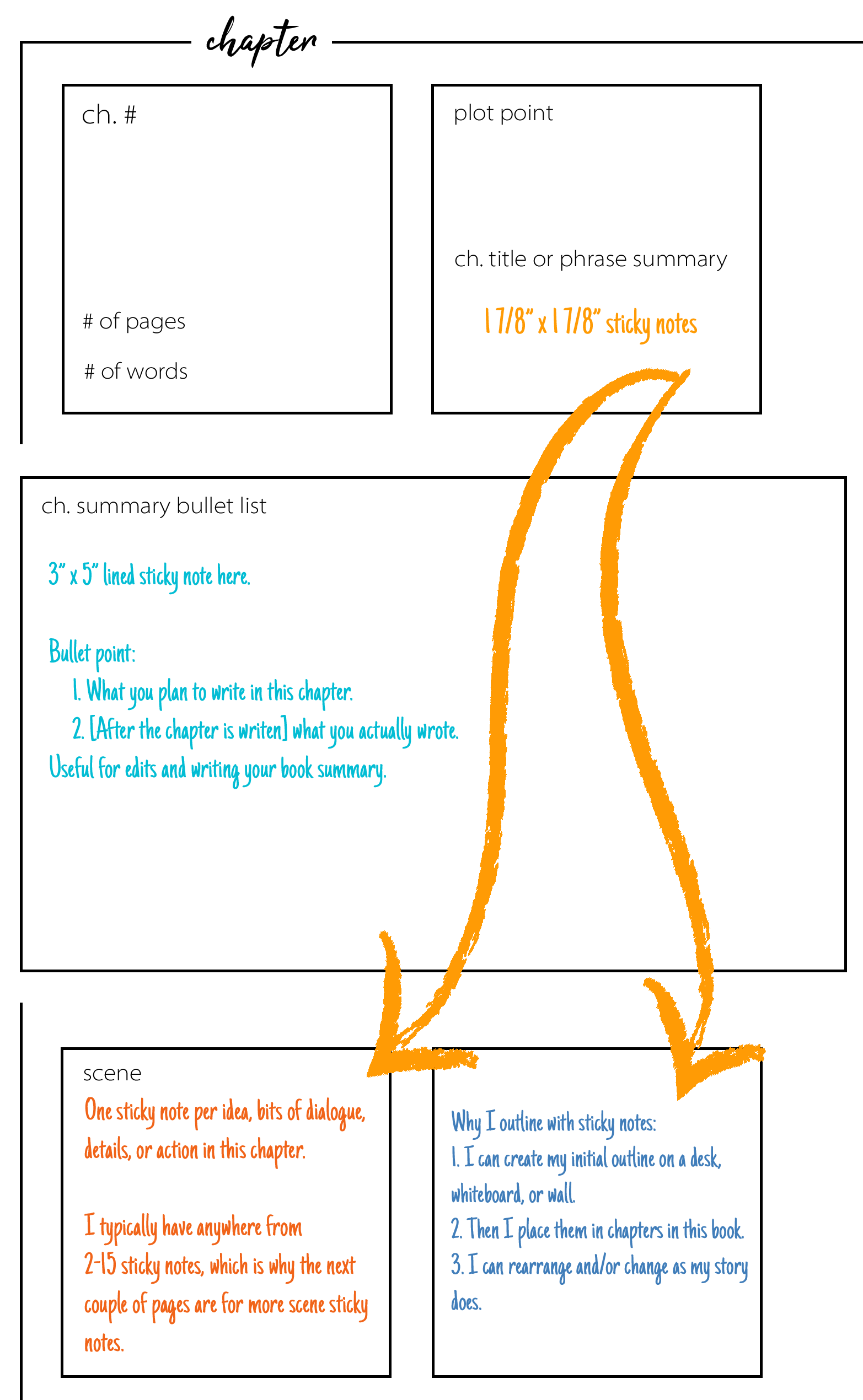
Keep your ideas fluid. Use sticky notes to outline your chapters so you can rearrange as necessary.
Additional Mystery-specific Pages
The Mystery Novel Sticky Note Plotter includes all of the above plus these additional pages.
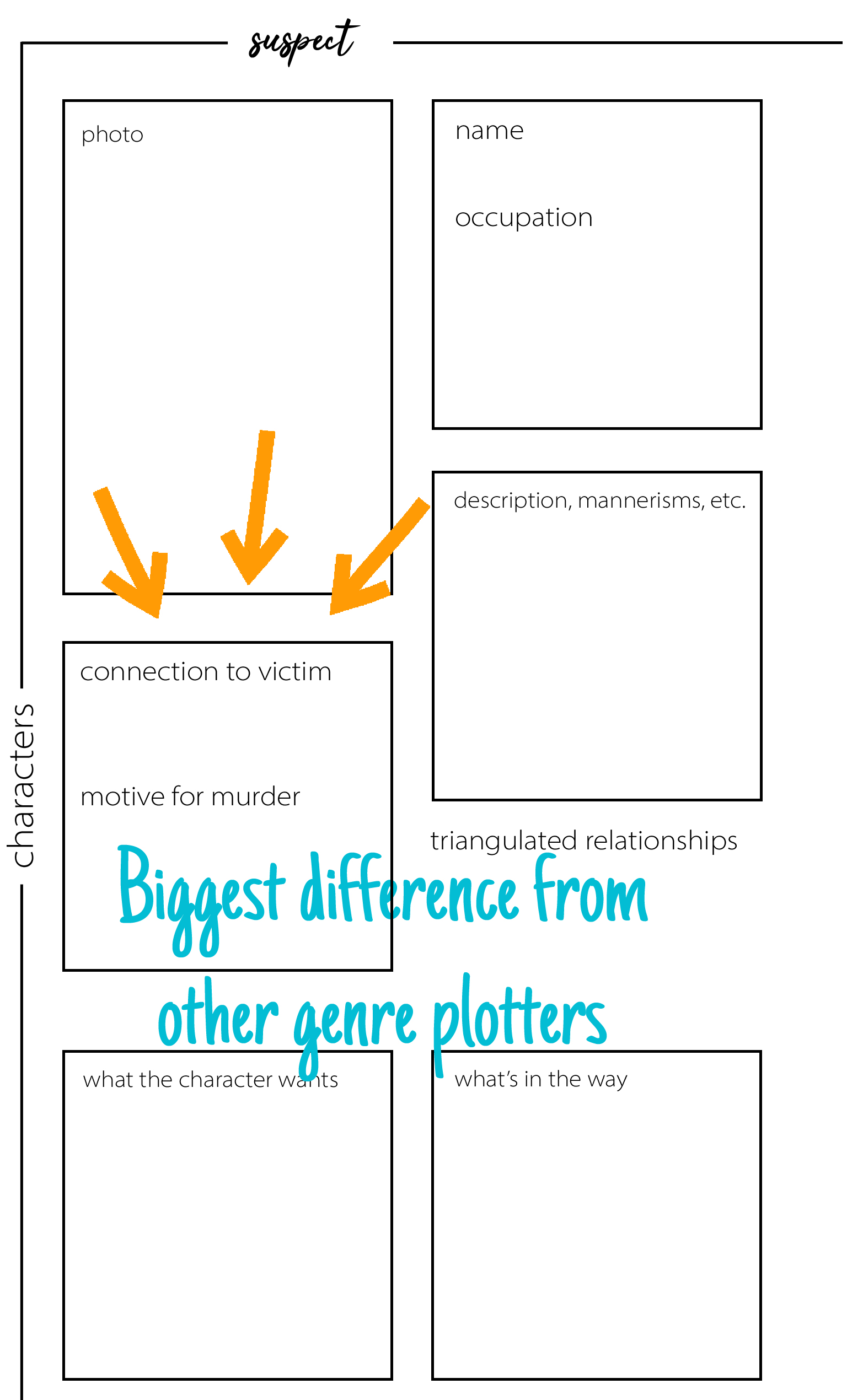
An example of how the character bios are slightly different in the mystery plotter compared to the other genre plotters. Instead of "main character," the mystery plotter has a page for a sleuth, a law enforcement officer, a victim, a perpetrator, and several suspects. Side character bios are also included.
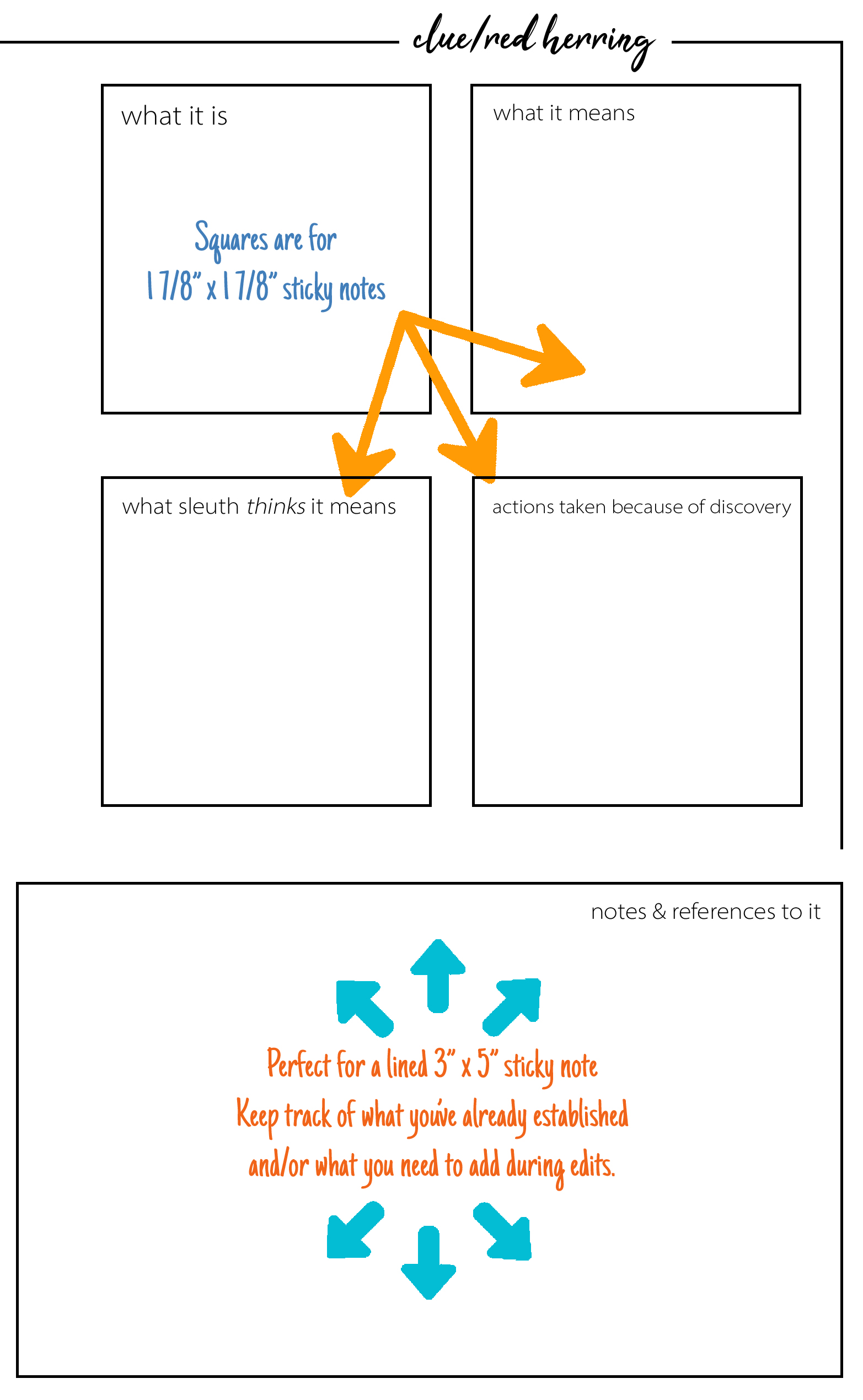
Keep track of all your clues and red herrings as you write them (or have ideas to add them back in during editing). Several pages are included in the mystery plotter.
